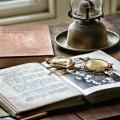I AM grateful to John Isherwood for this image which is captioned on its original cardboard mount, ‘Andover Market 1860’. It is the earliest photograph of Andover thought to exist and pre-dates by about ten years the opening of the first photographic studio in the town.
It is not known who took it but the photographer with his plate camera and tripod must have made an unusual sight in the street that day, though the absorbed buyers and sellers at the corn market clearly had business on their minds.
Market day was changed from Saturday to Friday in 1857 because by common consent it was a better day for the farmers of the district to come into town and trade. The sacks of corn leaning against the railings of the Guildhall forecourt ready for inspection by prospective buyers would have represented a sample of what was available.
It was evidently a day for dressing up in frock-coat and top hat, though one old gent on the left is wearing a traditional farmer’s smock.
The cobbled forecourt with its surround of railings was constructed in 1855 and that date can still be seen today within the stones.
Looking across the street, the distinctive building that is now Barker, Son and Isherwood with its cast iron first floor balcony and twin arched doorways has hardly changed during the ensuing 160 years.
The bowed façade dates from the early years of the 19th century but parts of the interior may be much earlier.
In 1860 the building was the offices of solicitors Henry Earle and John Smith – designated No 32 after the street numbering of 1881, with the shops to the left and right, Nos 34 and 30 respectively.
Ten years before this picture was taken those shops were both linen drapers, Mary Woolven to the left and Forby Dodman to the right but by 1860 Mary Woolven had gone and Forby Dodman had become postmaster, taking over the job from George Marcer whose stationers’ shop was further down the street where the John Russell Fox now stands.
Dodman almost certainly combined the job of postmaster with his drapery shop and it may well have been in the building to the right of Earle and Smith that the post office was then sited.
Or he could have moved to the shop on the left which was certainly the post office after 1881 and remained so until 1913 when the new post office in Bridge Street was built. No 34 High Street then became the premises of Midland Bank.
The premises to the right were split into two when numbering was applied, eventually becoming Barton the hairdresser and Fry’s bakery, but in 1931 F W Woolworth reunited the two and re-built.
To the extreme right in 1860 were the premises of William Clark the grocer who moved to the upper High Street in 1867.
The building was completely remodelled or rebuilt a few years later and in 1935 became Burton the tailor.
Their engraved black marble slabs are still visible at the base of the building today.






Comments: Our rules
We want our comments to be a lively and valuable part of our community - a place where readers can debate and engage with the most important local issues. The ability to comment on our stories is a privilege, not a right, however, and that privilege may be withdrawn if it is abused or misused.
Please report any comments that break our rules.
Read the rules here